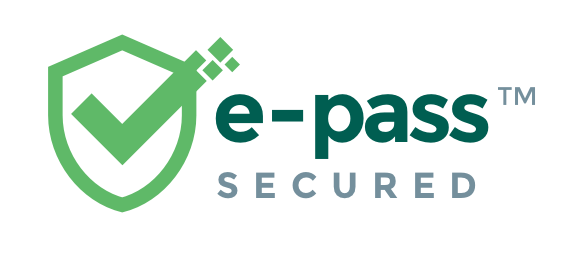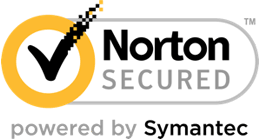question archive 1) The Sarbanes-Oxley Act of 2002 was passed by Congress due to the public outcry after the financial scandals of the early 2000s
1) The Sarbanes-Oxley Act of 2002 was passed by Congress due to the public outcry after the financial scandals of the early 2000s
Subject:ManagementPrice:7.87 Bought7
1) The Sarbanes-Oxley Act of 2002 was passed by Congress due to the public outcry after the financial scandals of the early 2000s.
- Sarbanes-Oxley’s purpose is to improve financial reporting.
- There are two internal control objectives and they are to ensure accurate financial reports, and ensure compliance with applicable laws.
- Sarbanes-Oxley requires companies to maintain strong and effective internal controls and thus prevent fraud and misleading financial statements.
- The Sarbanes-Oxley Act requires that financial statements of all public companies report on management's conclusions about the effectiveness of the company's internal control procedures.
- The control environment in an internal control structure is the attitude and awareness of internal control by all employees.
- Separating the responsibilities for purchasing, receiving, and paying for equipment is an example of the control procedure: separating operations, custody of assets, and accounting.
1) The Sarbanes-Oxley Act of 2002 was passed by Congress due to the public outcry after the financial scandals of the early 2000s.
- Sarbanes-Oxley’s purpose is to improve financial reporting.
- There are two internal control objectives and they are to ensure accurate financial reports, and ensure compliance with applicable laws.
- Sarbanes-Oxley requires companies to maintain strong and effective internal controls and thus prevent fraud and misleading financial statements.
- The Sarbanes-Oxley Act requires that financial statements of all public companies report on management's conclusions about the effectiveness of the company's internal control procedures.
- The control environment in an internal control structure is the attitude and awareness of internal control by all employees.
- Separating the responsibilities for purchasing, receiving, and paying for equipment is an example of the control procedure: separating operations, custody of assets, and accounting.
- Internal control is enhanced by separating the control of a transaction from the record-keeping function.
- A backlog in recording transactions is an example of a warning sign from the accounting system.
- Money orders are considered cash.
- A customer's check received in settlement of an account receivable is considered cash.
- Businesses who have several bank accounts, petty cash, and cash on hand, would maintain a separate ledger account for each type of cash.
- For strong internal control system over cash, it is important to have the duties related to cash receipts and cash payments divided among different employees.
- When a clerk enters a sale and the customer can see the amount displayed and is given a cash receipt, this is an example of a preventive control.
- If the balance in Cash Short and Over at the end of a period is a credit, it indicates that cash shortages have exceeded cash overages for the period.
- If the balance in Cash Short and Over at the end of a period is a credit, it should be reported as an "other income" item on the income statement.
- An example of good internal controls over cash payments is the taking of all cash discounts offered.
- A voucher is a form on which is recorded pertinent data about a liability and the particulars of its payment.
- When the voucher system is used, the amount due on each voucher represents the credit balance of an account payable if the voucher is in full payment to a creditor.
- A voucher system is an example of an internal control procedure over cash payments.
- A voucher is a written authorization to make a cash payment.
- A payment system that uses computerized electronic impulses to effect a cash transaction is called electronic funds transfer (EFT).
- A remittance advice is the notification accompanying the check issued to a creditor that states the specific invoice being paid.
- The bank often informs the company of bank service charges by including a credit memo with the monthly bank statement.
- Bank customers are considered creditors of the bank so the bank shows their accounts with credit balances on the bank's records.
- Depositing all cash, checks, etc. in a bank and paying with checks is an internal control procedure over cash.
- For efficiency of operations and better control over cash, a company should maintain only one bank account.
- In preparing a bank reconciliation, the amount of deposits in transit is deducted from the balance per bank statement.
- In preparing a bank reconciliation, the amount of outstanding checks is added to the balance per bank statement.
- In preparing a bank reconciliation, the amount indicated by a debit memo for bank service charges is added to the balance per company's records.
- In preparing a bank reconciliation, the amount of a canceled check omitted from the journal is added to the balance per company's records.
- A check for $342 was erroneously charged by the bank as $432. In order for the bank reconciliation to balance, you must add $90 to the bank statement balance.
- If an adjustment for an NSF check is made in a company’s bank reconciliation, then the company must have written a bad check during the month.
- The amount of the "adjusted balance" appearing on the bank reconciliation as of a given date is the amount that is shown on the balance sheet for that date.
- All bank memos reported on the bank reconciliation require entries in the company's accounts.
- The bank reconciliation is an important part of the system of internal controls.
- The main reason that the bank statement cash balance and the company's cash balance do not initially balance is due to timing differences.
- The bank reconciles its statement to the company's records.
- In preparing a bank reconciliation, the amount indicated by a credit memo for a note receivable collected by the bank is added to the balance per company's records.
- In preparing a bank reconciliation, the amount of an error indicating the recording of a check in the journal for an amount larger than the amount of the check is added to the balance per company's records.
- A check outstanding for two consecutive months will appear only on the first month's bank reconciliation.
- After a bank reconciliation is completed, adjusting entries are prepared for items in the balance per company's records as well as items in the balance per bank statement.
- A business that requires all cash payments be made by check can not use a petty cash system.
- In establishing a petty cash fund, a check is written for the amount of the fund and is recorded as a debit to Accounts Payable and a credit to Petty Cash.
- Expenditures from a petty cash fund are documented by a petty cash receipt.
- The sum of the money on hand and petty cash receipts in a petty cash fund will always be equal to the balance in the Petty Cash account.
- When the petty cash fund is replenished, the petty cash account is credited for the total of all expenditures made since the fund was last replenished.
- Most companies who have several bank accounts, petty cash, and cash on hand, would list each separately on the balance sheet.
- A petty cash fund is used to pay relatively large amounts.
- The petty cash fund eliminates the need for a bank checking account.
- A compensating balance occurs when a bank may require a company to maintain a maximum cash balance.
- Cash equivalents are short -term investments that will be converted to cash within 120 days.
- Money market accounts, commercial paper, and United States Treasury Notes are examples of cash equivalents.
- The doomsday ratio includes both cash and cash equivalents in the numerator.









